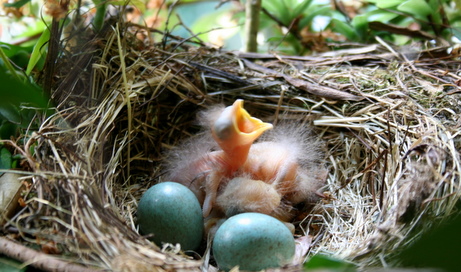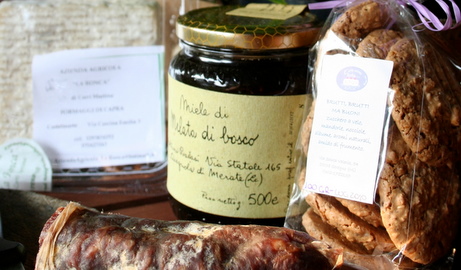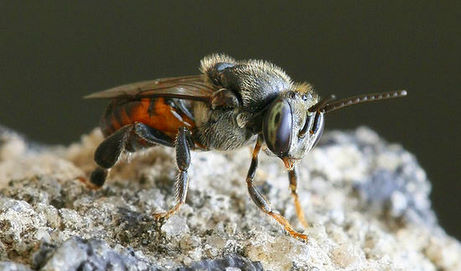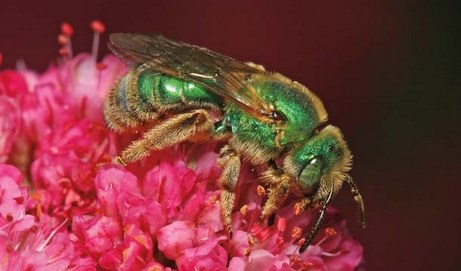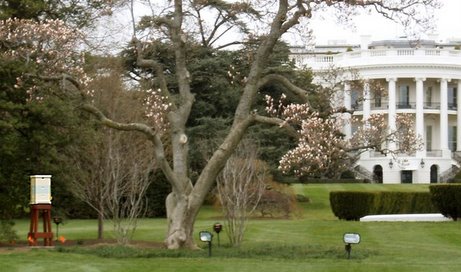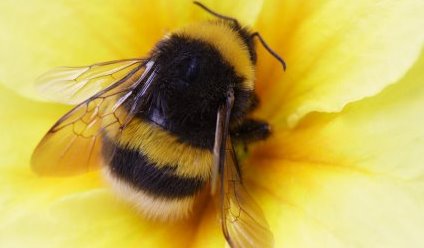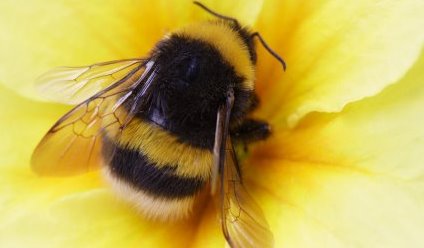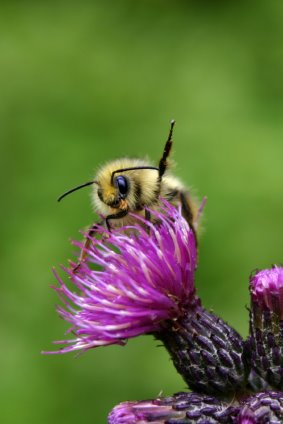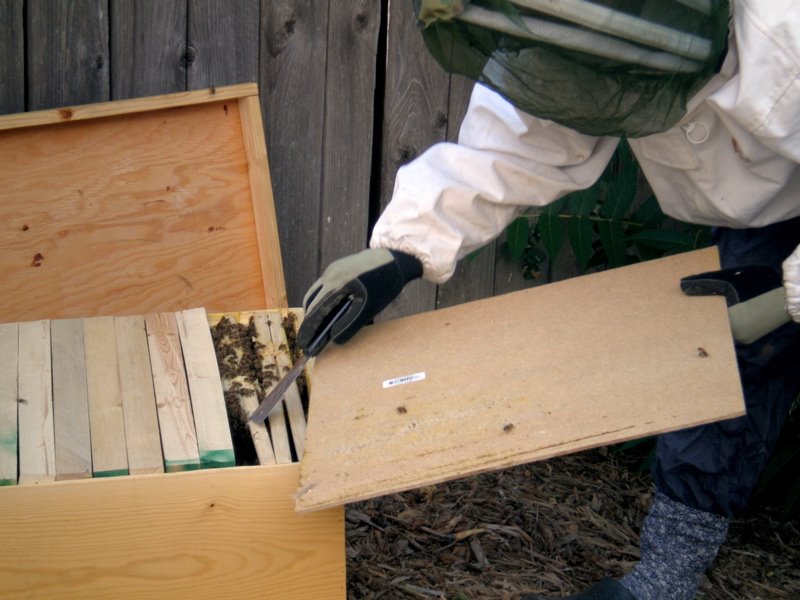Blog
The Birds: Update 1
Guido and I discovered a nest of blackbirds on our balcony (as in "Blackbird singing in the dead of night..."). These are not black birds, but actually the Common Blackbird (Turdus murula), a lovely songbird that's especially cherished and protected in England. Well, it just so happens that they're also in Italy. The newly hatched babies are so cute that I have to include some pictures here, and will continue to update them. We're trying to figure out how to enjoy our balcony without scaring the parents away, and some progress has been made. The mother used to fly away as soon as I stepped onto the balcony, but now she'll let me sit out here and type, which I love. But since this is a food blog, here's the tie-in. You know that old nursery rhyme: "Sing a song of sixpence, a pocket full of rye, four and twenty blackbirds, baked in a pie"? I was always struck by the imagery of the following line in particular: "When the pie was opened, the birds began to sing; wasn't that a dainty dish to set before the king?" As a child I loved the image of birds flocking out of a surprised king's pie, but it turns out that the rhyme--published circa 1744--refers to an actual recipe...from Italy! An Italian cookbook in 1549 contained a recipe that instructed how to make pies "so that birds may be alive in them and flie out when it is cut up" (quoted from the English translation, c. 1598). In fact, the wedding of Marie de Medici and Henry IV of France might have had such pies, as indicated by this account of the wedding: "The first surprise, though, came shortly before the starter—when the guests sat down, unfolded their napkins and saw songbirds fly out. The highlight of the meal were sherbets of milk and honey, which were created by Buontalenti." Leave it to Italians to be most impressed not by the live birds, but by the gelato. And now for the pictures: We found these five eggs first. The second one is hatching in this picture. I hope their worms are as orgasmic as my pesto pasta. A short moment of rest. Being a newborn is exhausting! (Last thing--you may notice that there are two birds and two eggs, but there were orginally five eggs. I saw a third bird at one point, but now it's gone. Not so sure what happened...
read moreSuper Orgasmic Slow Food Festival
Today Guido and I went to Caglio, a small town super close to the Swiss border (which explains why I had "The Sound of Music" in my head). A friend of Guido's told him about a Slow Food festival in this little mountain village, and Guido, being the amazing boyfriend that he is, knew that we had to go. Tucked into the foothills of the Italian alps about ninety minutes north of Milan, Caglio was the perfect location to display locally handcrafted foods from the province. (You can see a fun blog about Caglio here--but the photos are taken in winter.) There were so many sweet things to see. First we had buckwheat polenta (recipe for that later), followed by the most amazing gelato I've ever had (it was some of the best Guido has ever had too, and since he's Italian, that's saying something). The three flavors we tried: mandorle di Noto, almonds from Noto, a Sicilian city famous for its almonds; riccota and amaretti (a type of cookie); and zucchini (!). They were all amazing, but I have to say that the ricotta and amaretti gelato was totally orgasmico. A couple other fun things we got in the city: salami di capra, or goat salami (mostly for G); a deep amber mixed-flower honey (from the display pictured); a hard goat cheese; and best of all, the gift that keeps on giving: plants! We bought four aromatic herbs for the balcony, a pungent mint, pineapple sage (love it!), lemon balm, and rosemary. All four were grown in the mountains, and the man who cultivated them lectured us for almost half an hour (maybe more) on how to care for and use each one. I'll never forget his shock white hair and bright blue eyes as he explained everything with so much passion. Finally, if you're wondering how I plan to stay slim enough to fit into my skinny jeans this fall, that's a darn good...
read moreStingless bees can mummify beetles in resin!
Yet another reason why bees are awesome: They can mummify beetles. Of course, we're not talking about honeybees here, but I am inspired by ALL bees, no matter what kind. So, apparently this happens in Australian stingless bees, a species called Trigona carbonaria. Scientists placed a bunch of small hive beetles outside a laboratory hive of stingless bees. If the beetles made it past the guard bees, a group of bees in the hive attacked the beetles and coated them with a mixture of resin, mud, and wax. How long does the mummification take? Just about ten minutes. Beat that, Egyptians. The only time researchers saw this method fail was when temperatures rose above 40 Celsius and the resin didn't set. But other than that? Fool proof. Other bees use this method as well, but the coolest one ever mixes in acid to the resin, which eats away at the beetles' hard shell. Let's face it. Bees are the...
read moreGreen Bees
You must read this lovely article, "In the Key of Bee," by Erik Vance, featured in the online mag Bay Nature. In it, Vance writes about Gordon Frankie, a bee professor at UC Berkeley who specializes in native bees. I have to admit I'm a bit smitten with native bees myself lately, and am quite inspired by his work. Anyway, the article talks about several native bee varieties, such as the leaf cutting bee, who lines his hive with small, precision-cut leaf slices, and can be seen bobbing through the air with small bits of leaves. The article also talks about the work one man is doing to help preserve native bee populations, an admirable feat in and of itself. Click here for a link to the article, and for more great pics. Photo by Rollin...
read moreI saw the White House Bees!
I went on a weekend trip to Washington D.C., to visit a friend of mine. Anyway, one of the highlights of my weekend (besides the gorgeous weather) was walking past the White House and getting a glimpse of the White House Bees! I was so excited and inspired. I don't have a heck of a lot to say about it, except that it's so exciting that the Obamas are setting a precedent for organic farming and the importance of bees in our communities and urban landscapes. This picture was taken from the City Bees Blog. Click here to see more pictures of the White House...
read moreBee hives at the White House!
According to Bee Culture, a beekeeping magazine, and an article in the KansasCity.com, Michelle Obama has recently announced that not only will there be an organic garden at the White House, there will also be two bee hives! Apparently the bee hives belong to a White House employee who lives nearby and will tend the hives. The crops and will be used by the White House kitchen staff for the family and for official functions, while some will be donated to Miriam's Kitchen, a soup kitchen near the White House. Some of the produce will include lettuces, fennel, rhubarb, cucumbers, sweet and hot peppers, as well as berries and some herbs.The 1,100 square foot garden will be the first of its kind since Eleanor Roosevelt planted a victory garden during World War II. Mrs. Obama broke ground on the first day of spring with a group of fifth graders from Bancroft Elementary School in Washington. The students will be brought back next month for the planting and will continue to be involved during harvesting as well. Mrs. Obama said that she thinks it will encourage her children to eat their vegetables, especially if they're involved in planting and growing them.I just think we're so blessed to have a first family taking such bold steps towards a more ecological lifestyle, setting a good example for a key part of our lives that we have to change here in this country. A Brazilian friend of mine commented the other day, "I just don't get it, Americans are the richest people in the world, but their food is so terrible and the people are so fat!" Well, maybe it's time to change that, eh? Hopefully the inspiration that the Obama's have inspired can trickle down into these other, very important parts of our...
read moreI heart bumblebees! Part Three: How we can help.
I watched the documentary King Corn last night and LOVED it. It's about two men who decide to farm an acre of land in Iowa and grow corn to understand just how the crop gets into so much of our food (and bodies). It's poignant, interesting and thoughtful, and I couldn't help but think how similar the issues they're looking at are to the ones that have caused bee decline. Basically, we're both exploring the downward spiral of agriculture, and its effects on our environmental and bodily health. The King Corn website also offers some great ways to address our agricultural system on the "take action" tab in their website, which gave me some good ideas for this post. So let's get on with it, shall we? How can we help out bumblebees (and bees in general)? First of all, it kind of depends on where you are. I'm going to tailor this to folks in the U.S., but I know there are similar resources in the UK as well. I'll start with the easiest, less complicated solutions and go from there. Make a bee garden. Fun fact: Bees don't see red, but do see blue, yellow, and ultraviolet. So, most of the flowers bees pollinate are yellow, and some are blue (and some are other colors too!). Check out this cool website for some tips on how to make your garden bee-friendly. Here's a bee plant list for those of you that want to get right on it. Save some wild space. If you have some land (or even just a back yard), create wild/untamed spaces for bumblebee habitat. They love long grasses, abandoned animal burrows, etc. So if you can leave some wild spaces in your yards, you'll increase wildlife diversity in general, and attract all kinds of pollinators and birds as well. Buy local. Support small, local farms through farmer's markets and community supported agriculture (CSAs). Small farmers farm more diverse crops than large scale agriculture and usually are much more bee friendly. Buy Organic. Because of the expensive labeling process, not all farmers can afford to be organic, but actually are. That's why shopping at the farmer's markets is so helpful because you can actually talk to the farmers and find out about their farming practices. But buying organic at the store is huge too. Why? Because, to be blunt, pesticides kill bees! So, the more we support systems that don't use pesticides, the more bees will flourish. Learn about the Farm Bill. Creating innovative new farming methods is one of the most important things we can do, which means we have to get involved in our politics. We have to educate ourselves. In the EU, for example, farmers are incentivized by the government (through subsidies) to leave sections of their land for hedgerows and wildflowers to attract pollinators. Got that? Farmers are PAID to leave portions of their land for bees. More bees and pollinators=higher crop yields. Farmers are also moving away from intensive pesticide use and towards organic agriculture. The challenge we face in the U.S. is that crops like corn--which are part of this huge industrial farming complex that eats up all the land--don't need bees, so there have to be other ways to incentivize farmers to keep some of their land...
read moreI heart bumblebees! Part Two: Why the bumblebee is in decline.
So, why have the bumblebees been in decline? Many of the articles I found concerned the U.K., which doesn't mean that the decline isn't happening in the U.S., it's just that the U.K. has been a hotbed of recent bee research. An article titled "Decline of Bumblebees (Bombus) in the North American Midwest" states: "The nature and extent of bumble bee decline in North America is poorly understood due mainly to a lack of baseline and long term data." Clearly, there are reports of bee decline in the U.S. as well, and I think that the two phenomenons are closely related. So let's return to David Goulson's analysis. In the last blog, I wrote about bumblebee's unique characteristics, but let's point out some of the main ones that are contributing to their decline. Bumblebees tend to specialize more than honeybees, and some only feed off of one plant species, like legumes (Fabaceae) for example. Bumblebees make their homes in abandoned animal burrows (rodents, typically) and in grassy tussocks, which are usually only available in unmanaged grass and pasture lands. Let's just think for a moment about the track our agriculture has been on. Farm lands that were once interspersed with wild flowers and grazing meadows for horses are now mono-cropped and farmed for every inch of possible land. In Iowa, for example, my boyfriend has told me how farmers will cut down sections of riparian corridor (the plants that you find along the sides of river beds) to farm corn there. ACK! That's the trouble with subsidized farm products. When the government pays more for a certain crop (think: ethanol), you get all the farmers replacing their more diverse food crops for cash crops that will yield the greatest amount of, well, cash. But I digress. Sort of. Previously, bumblebees and honeybees would feed off of some food crops (like raspberries, strawberries, apples, and legumes) and especially off of the wild flowers that grew in the adjacent meadows and fallow pastures. Bumblebees in particular would also make their homes in the unplowed sections of farms in those abandoned rodent burrows and in hedgerows, the sections between cultivated farm lands where bushes and wild plants grow. One of the interesting things the article about bumblebees in the Midwest pointed out was that bumblebee diversity took a sharp decline in Illinois during 1940 and 1960, which "coincided with large-scale agricultural intensification in Illinois" during that time period. This same process has been occurring in the U.K. as well. Goulson writes that the U.K. has lost 98% of its unimproved grassland since World War II. He then goes on to say that "increased use of herbicides and improved seed cleaning mean that arable crops are now virtual monocultures, whereas once they were rich in flowering seeds." Basically, as a result of this agricultural intensification, there has been a significant loss in wildflower diversity. When bumblebees need certain habitats and those habitats get plowed over, and when bees depend on certain flowers and those flowers aren't cultivated any more...well, you do the math. The bees go extinct. References Goulson, D. (2006, December). Demise of the bumblebee in Britain. Biologist. Volume 53, Number 6, 294-299. Retrieved March 04, 2009. Grixti, J., Wong, L., Cameron, S., & Favret, C. (2009, January). Decline of bumble bees...
read moreI heart bumblebees! Part One: Cool facts about Bumblebees.
So, I was speaking with a colleague the other day who just happens to have a family history in beekeeping. Her father (if I'm correct) is a third generation beekeeper and also an etymologist. Anyway, we were talking about her family's bee business when she mentioned that over 5 species of bumblebees had disappeared in the U.K. recently. 5 species? That surprised me, so of course--since I teach research writing and I'm into bees--I had to go and research the fact. I found two articles that talked about this phenomenon. One was titled "To Be or Not to Bee..." by Marianna H. Horn and Peter G. Kevan and another (not so subtly named) was called "The Demise of the Bumblebee in Britain," by David Goulson. Both articles had some enlightening things to say about bumblebees--not just why they are disappearing (which may give some clues as to why honeybees are disappearing as well), but also just some wonderful info about the lovely bumblebee in general. So, let's start there. Some neat facts about the bumblebee from their articles: Bumblebees belong to the genus Bombus that includes many rare species with highly diverse ecologies. Honeybees belong to the genus Apis. Bumblebees are the larger, hairier variety of bee, often colorful as well. Honeybees, by contrast, are described by Goulson as "smaller, slender, drab, and relatively hairless." (Guess who is a little biased towards the bumblebee? I'd say Goulson, but he's starting to win me over too.) Bumblebees, like honeybees, feed solely on flower nectar and pollen for their energy and protein. There are only 240 species of bumblebees worldwide (contrasted with thousands of bee species in general), and they are found mostly in the Northern Hemisphere from the Arctic to the tropics. Bumblebees are endotherms, which means that they can warm themselves by contracting and releasing their flight muscles, also known as "shivering," which allows them to endure cooler temperatures than most bees. Bumblebees are social creatures--like honeybees. But instead of living in a hive, they live in abandoned animal burrows, or (and I LOVE this phrase) in grassy tussocks. (Basically a section of grass that grows a bit higher and more thickly than the rest.) The colonies that the bumblebees live in consist of about 400 worker bees (all female) with one queen. To contrast, a typical cultivated hive of honeybees has about 60,000 bees. Bumblebees can be much more specialized than their honeybee cousins in terms of what they pollinate. One species of bumblebee, for example, only pollinates plants in the pea family. This is what makes them more susceptible to extinction though because if that species dies off or isn't planted, then the bee is likely to die with it. Bumblebees aren't very aerodynamic, so flying demands a lot of energy. Goulson gives this great analogy. Apparently, it's been calculated that a running man consumes a Mars bar worth of energy in about 30 minutes. By contrast, a honeybee would use that same amount of energy (in bee portions) in about 30 seconds of flight. Thus, he concludes, a nest of about 400 bees would need a lot of food. Bumblebees do have stingers, but they're not barbed like a honeybee's. They can sting multiple times if necessary. Finally--and this is from my personal experience, you can...
read moreTop Bar Hives in Kenya
So, when I took beekeeping classes last year, I studied what's known as the top bar hive, not the traditional Langstroth hive (see the colorful bee boxes in the post below). Top bar hives are much easier to build than the Langstroth hive, which makes it perfect for using in developing countries. Some would even argue that it's more ecological for the bees since they build their own comb entirely, without the wax mold that comes with the Langstroth. We'll save that discussion for another post. For now, check out this fantastic video to learn more about the top bar hive! Next on I Heart Bees--we'll look at Top Bar Hives in more depth, for those interested in this alternative method of beekeeping. I'll talk about why they're considered more ecological and include a video about how to build a hive. See you...
read more
